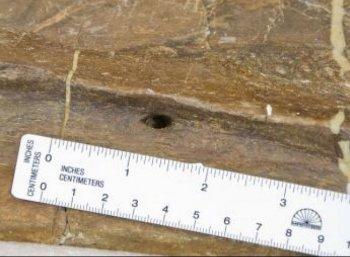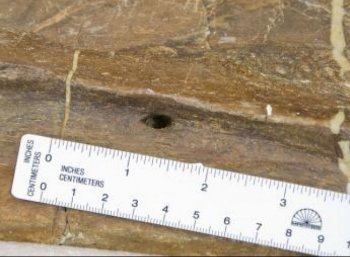Dinosaur Bone Holes Hint at High Metabolism
Tiny holes associated with blood supply inside fossilized dinosaur long bone shafts suggest that dinosaurs had higher metabolic rates than present-day mammals.

Close-up of foramen in the femur of Centrosaurus apertus, a ceratopsian dinosaur. Donald Henderson/Royal Tyrrell Museum
|Updated:






